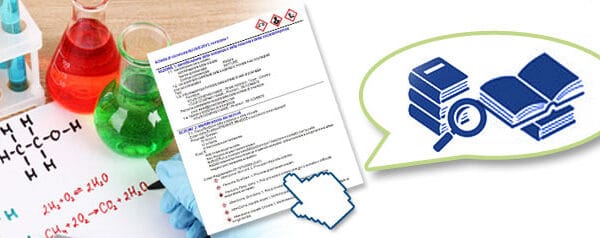Per occuparsi di schede dati di sicurezza bisogna aver seguito un corso di abilitazione come Responsabile Schede Dati di Sicurezza e avere una certificazione UNI?
Questo breve articolo sul responsabile delle SDS vuole essere un ragionamento a voce alta per capire se bisogna certificarsi secondo la UNI/PdR 60:2019 per svolgere attività professionali legate alla redazione e gestione di scheda dati di sicurezza.
I concetti su cui si basa l’ analisi sono tre e sono molto semplici:
- Alcune norme nazionali o europee richiedono una comprovata professionalità per svolgere determinate attività specialistiche. Il riconoscimento della professionalità può derivare dal tipo di laurea, da corsi di formazione ben definiti per gli argomenti e le ore, dal superamento di esami, da qualifiche professionali. Esempi di figure di questo tipo sono il consulente ADR, il direttore tecnico di officina PMC, il valutatore della sicurezza chimica dei cosmetici, gli RSPP e tanti altri.
- La scheda dati di sicurezza è il documento da redigere per comunicare i pericoli che sostanze e miscele presentano e le misure da mettere in atto per ridurre i rischi durante il loro utilizzo. Come, quando e perché redigere una SDS è stabilito dal regolamento REACH, che richiede, inoltre, che la SDS sia redatta da una persona competente, senza specificare titoli di studio o qualifiche professionali necessarie a svolgere questa attività.
[…] La scheda di dati di sicurezza deve essere compilata da una persona competente che tenga conto delle necessità particolari e delle conoscenze degli utilizzatori, se note. I fornitori di sostanze e miscele devono garantire che le persone competenti abbiano ricevuto una formazione adeguata comprendente anche corsi di aggiornamento. […]
- Una certificazione è una procedura con cui una terza parte indipendente verifica e conferma che un prodotto, un servizio, un processo o una persona è conforme ai requisiti specificati da una norma.
Sul sito web dell’UNI (Ente italiano di normazione) si legge che
“[…] Le prassi di riferimento sono documenti che introducono prescrizioni tecniche o modelli applicativi settoriali di norme tecniche, elaborati sulla base di un rapido processo di condivisione ristretta ai soli autori, sotto la conduzione operativa di UNI, e da esso emanati, verificata l’assenza di norme o progetti di norma allo studio (in ambito nazionale, europeo o internazionale). Non essendo documenti normativi, le prassi di riferimento non sono elaborate all’interno degli organi tecnici dell’UNI e degli Enti Federati (che hanno invece il compito di seguire la competente attività di normazione tecnica relativa all’elaborazione delle norme UNI, delle specifiche tecniche e dei rapporti tecnici) bensì in appositi “Tavoli”.
Le prassi di riferimento sono documenti i cui contenuti esprimono le esigenze di soggetti significativi del mercato e la cui elaborazione è garantita da regole UNI. Non sono norme tecniche UNI, specifiche tecniche UNI/TS o rapporti tecnici UNI/TR (dalle quali si differenziano per il processo di elaborazione, le tipologie di soggetti coinvolti, il livello di consenso e la veste grafica) ma possono diventarlo se successivamente vengono condivise da tutto il mercato di riferimento.”

Partendo da queste premesse la risposta alla domanda di partenza è la seguente:
La gestione e la redazione di schede dati di sicurezza in un’azienda deve essere affidata a una o più persone competenti in materia che sono, inoltre, continuamente formate e informate. Dal punto di vista normativo, non vi è alcuna norma (intesa sia come norma tecnica, che legge o regolamento) a stabilire un titolo di studio, una modalità di formazione o di certificazione necessaria a riconoscere ufficialmente un professionista quale persona competente o responsabile delle SDS.
La scheda dati di sicurezza è un documento complesso che richiede alla persona che la legge e la redige di conoscere sia le informazioni che devono essere riportate in ciascuna delle 16 sezioni sia le normative da cui queste stesse informazioni dipendono.
Oltre la conoscenza teorica, punto di partenza fondamentale per un approccio cosciente, è l’esperienza a fare la differenza in un contesto lavorativo articolato e un ambito che ricade sulla sicurezza dei prodotti, la salute dei lavoratori e dei consumatori e il destino ambientale.
Se hai bisogno di supporto in merito alla schede dati di sicurezza, puoi consultare i nostri servizi di consulenza QUI.

